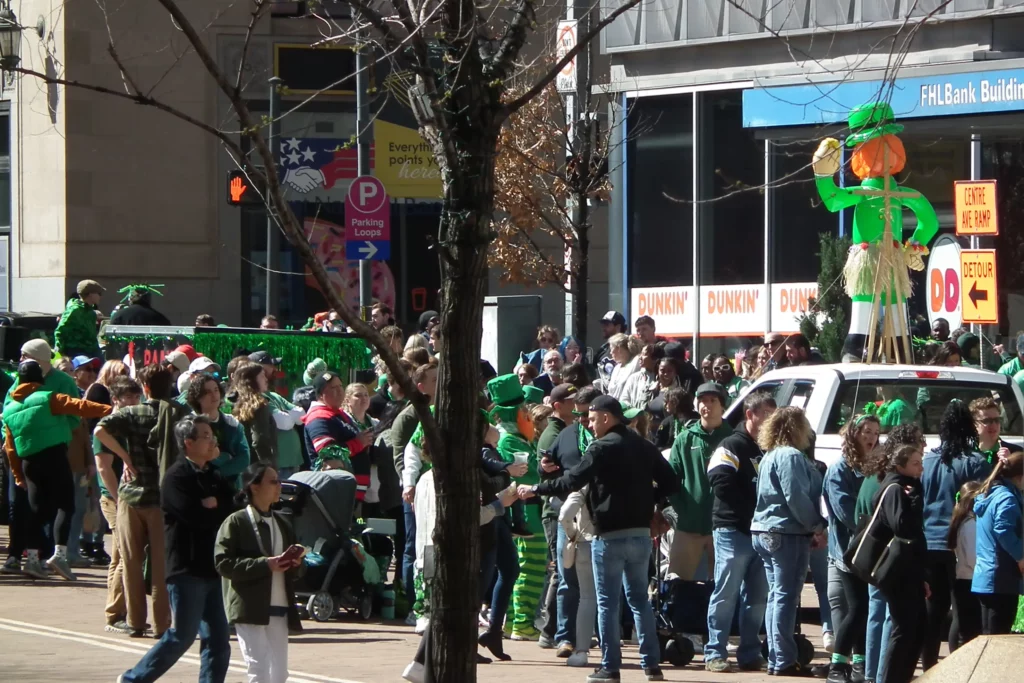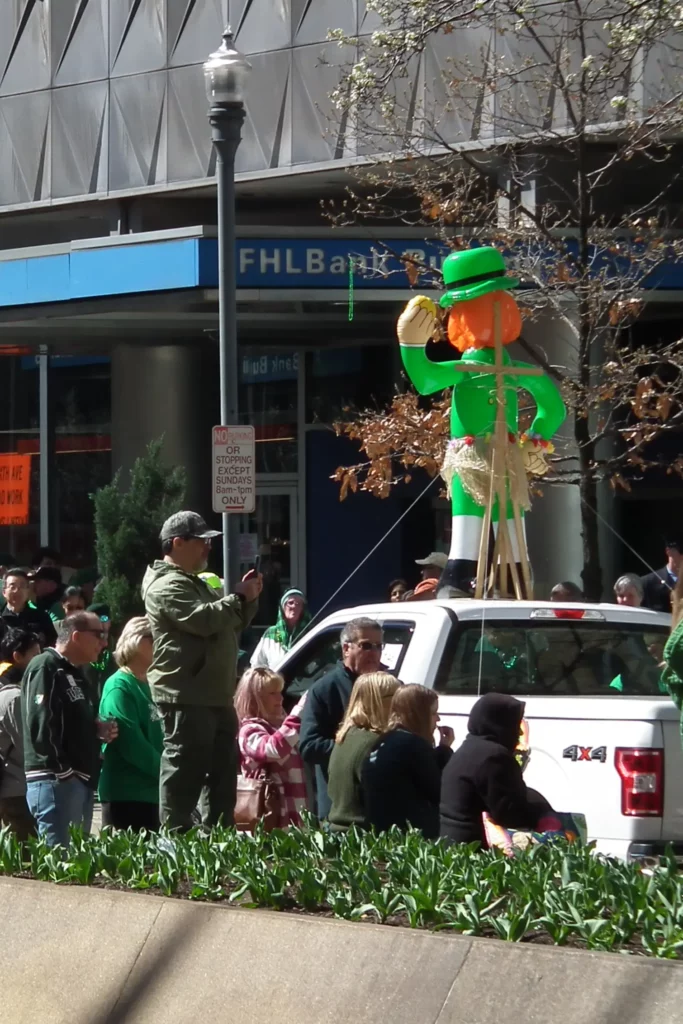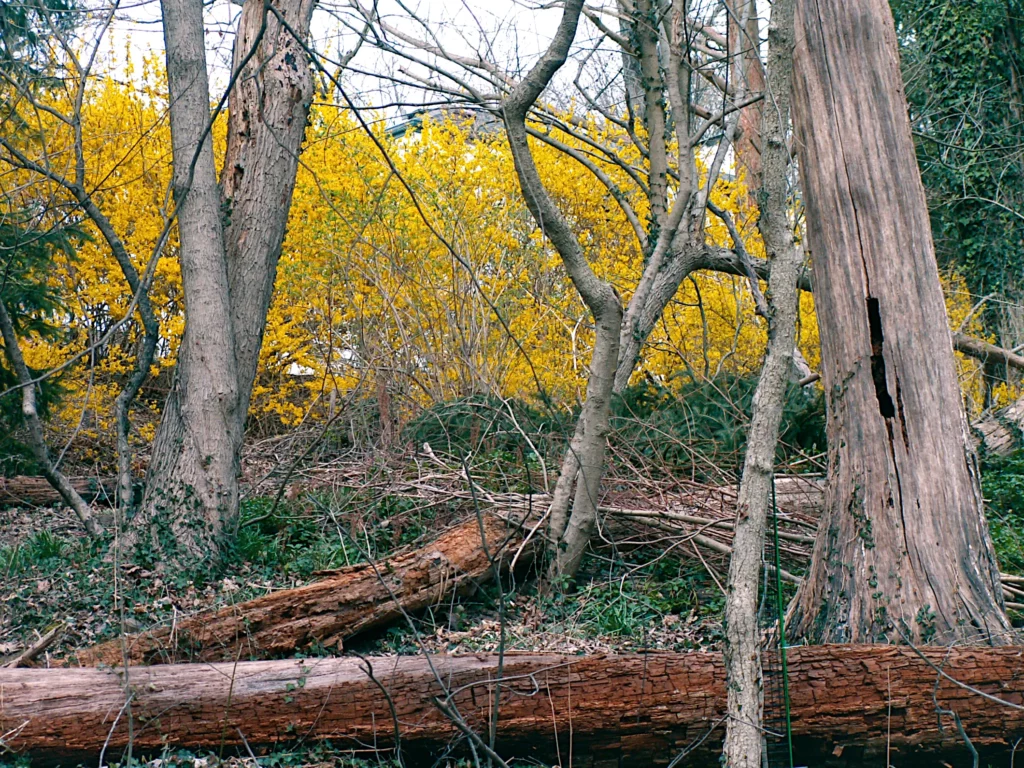
-
St. Bernard’s Church, Mount Lebanon
-
St. Paul’s Episcopal Church, Hill District

Elise Mercur was an extraordinary woman. The first female professional architect in Pittsburgh, and one of the first anywhere, she had a prosperous career for about a decade between 1894 and 1905. Then she retired, and most of her buildings have been crushed by the steamroller of time—or by university presidents who need them out of the way to make room for some donor’s vanity project.

This church remains, however. It was built for the St. Paul’s Episcopal congregation; later it passed to the Church of the Holy Cross, a Black Episcopal congregation that eventually moved to Homewood. Right now it belongs to the Christian Tabernacle Kodesh Church of Immanuel.


Those little triangular dormers are imitated from Richardson, who used them in his famous Emmanuel Episcopal Church in Allegheny West.
The Wikipedia article on Elise Mercur is unusually thorough, so old Pa Pitt will not repeat its information here. He will add, however, that he has been scanning old trade journals to see whether any other buildings by Mercur have survived, and he will publish any findings in this spot.

As the only known remaining work of our first female architect, this church has a historical significance that makes it a preservation priority. Father Pitt assigns it to the Near Threatened category in his classification of our vulnerable landmarks.

The most striking feature of St. Paul’s is the octagonal cupola.

-
Longuevue Drive in Beverly Heights

Longuevue Drive is one of the streets in Beverly Heights, one of the plans from the 1920s that make the Mount Lebanon Historic District a museum of interwar domestic architecture. The variety of styles is delightful. One gets the impression that all the rules have been repealed, and you can have whatever house your most childish fantasy specifies, from a French château to a fairy-tale witch’s cottage.

We have dozens of pictures if you choose to see them, but because there are so many, we put them behind a “more” link.
(more…) -
Daub Building

Thanks to the research of an architect correspondent, we can say with fair confidence that this neglected building on Smithfield Street was designed by Frederick Osterling, one of the titans of Pittsburgh architecture. It was built in about 1898 for John Daub, whose name in big letters stares down at us from above the fifth floor.1

This building has suffered the usual loss of cornice, and the first floor was entirely remodeled at some point by someone who thought weird pebbledash stucco would look just right on a Romanesque building from the 1890s. But between those extremities most of the decorative details are preserved.

The Daub Building is vacant right now and therefore in danger; we hope that its attribution to Osterling will encourage preservation and restoration.
- Philadelphia Real Estate Record and Builders’ Guide, September 15, 1897: “F. J. Osterling, Telephone Building, will prepare the plans for the John Daub Building, to be erected on Smithfield street, near Seventh avenue.” Thanks to David Schwing. ↩︎
-
St. Patrick’s Day
-
House by Hannah & Sterling in Beverly Heights
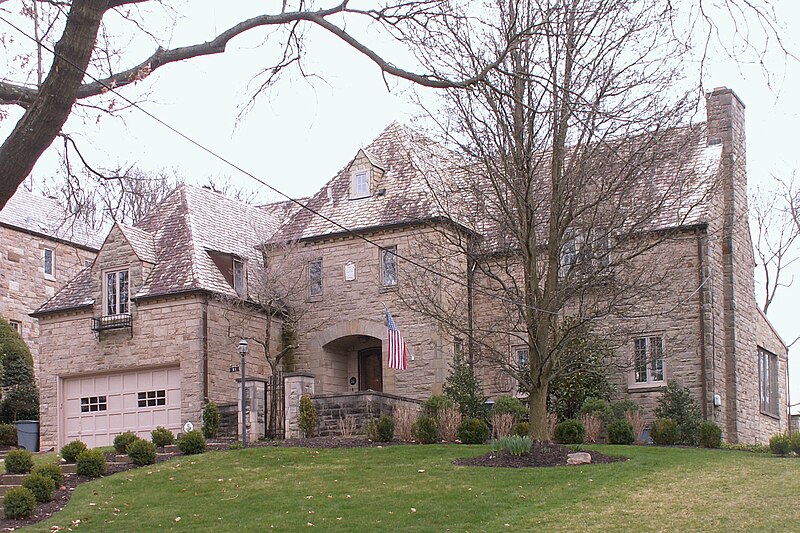
One of the most remarkable things about the houses in the Mount Lebanon Historic District is how little they change. Many of them are preserved almost exactly as they were built—like this one, built in 1934 from a design by Hannah & Sterling. Hannah is Thomas Hannah, an architect at the end of a long and prosperous career when this house was built; Sterling was the younger P. Howard Sterling, who would continue designing houses in Mount Lebanon after his older partner died. The picture above shows the house as it appears today, and the fuzzy microfilm picture (it’s the lower of these two pictures) from the Pittsburgh Press right after the house was built matches it almost exactly.

Pittsburgh Press, October 28, 1934. 
-
The House That Death Built

William D. Hamilton was in the coffin business, which he inherited from his father and built up into the National Casket Company, a titan in the death industry. North Avenue is the neighborhood line on city planning maps, so this house is in the Central Northside neighborhood by those standards; but socially it belongs to Allegheny West, and the Allegheny West site has a detailed history of 940 West North Avenue.
The architects were Alston & Heckert; the house was built in 1895 or shortly after.1 The style is best described as “eclectic,” but the Gothic windows upstairs give the house a slightly somber and funereal aspect. Since those two trees have been flourishing in front, it is impossible to get a view of the whole façade except in the winter.


- Source: The Inland Architect and News Record, May 1895. “Architects Alston & Heckert: For W. D. Hamilton, a two-story brick residence, slate trimmings, to be erected on North avenue, Allegheny, Pennsylvania; cost, $10,000.” In an earlier version of the article, Father Pitt had said that he did not know the architect, but the names jumped out at him from this old magazine. ↩︎
-
Warren United Methodist Church, Hill District

The Warren United Methodist Church might qualify for Rundbogenstil were it not for the very slight pointing of the arches, which takes away the Rund part of Rundbogenstil. With its battlemented roofline, it gives the impression of a chapel built into a castle. The attached parsonage is more interesting and more striking than the church when we see it from the street, and our only legitimate complaint about it would be that it draws too much attention toward itself and away from the church.
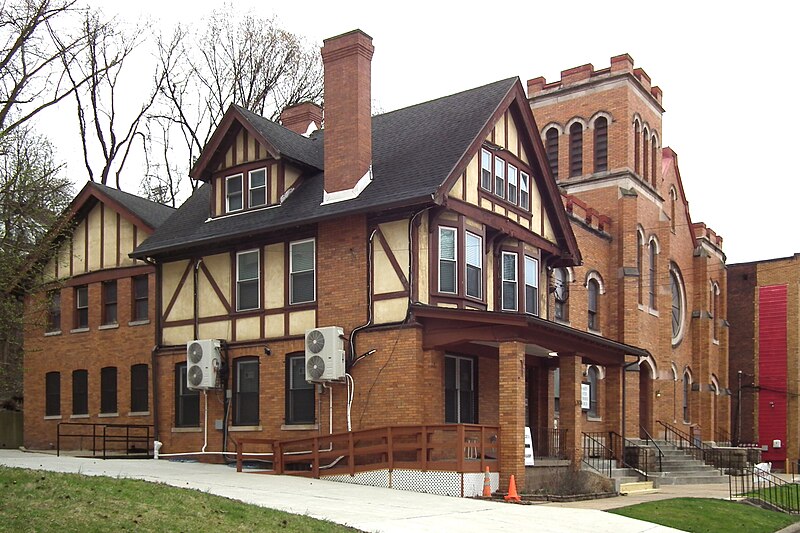

Addendum: The architects of the church, and probably the parsonage as well, were Milligan & Miller of Wilkinsburg; it was built in about 1908. Source: Ohio Architect and Builder, July, 1907. “PITTSBURG.—Architects Milligan & Miller, of Wilkinsburg, are drawing plans for a brick and stone church to be erected on Center avenue, for the Warren Methodist Episcopal congregation. Cost $3,000.” A zero has probably been left out of the cost; you could not get a brick and stone church for $3,000, but this could easily be a $30,000 church.
-
Wall of Forsythia
-
Western Theological Seminary, Allegheny West

“Blue hour” pictures are very fashionable these days. Well, old Pa Pitt can do those too, if you really want them.


We also have pictures of the Western Theological Seminary by day.

